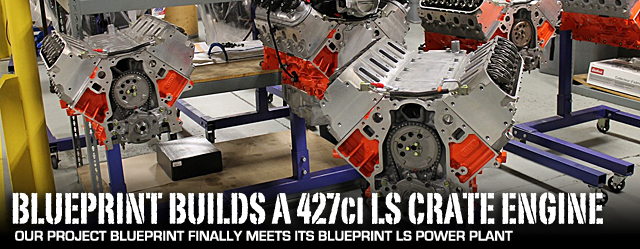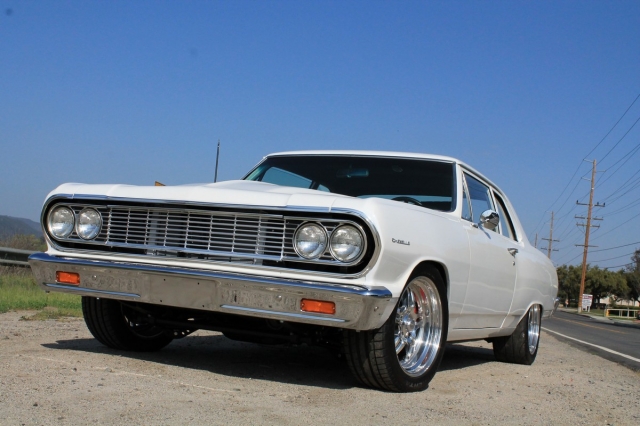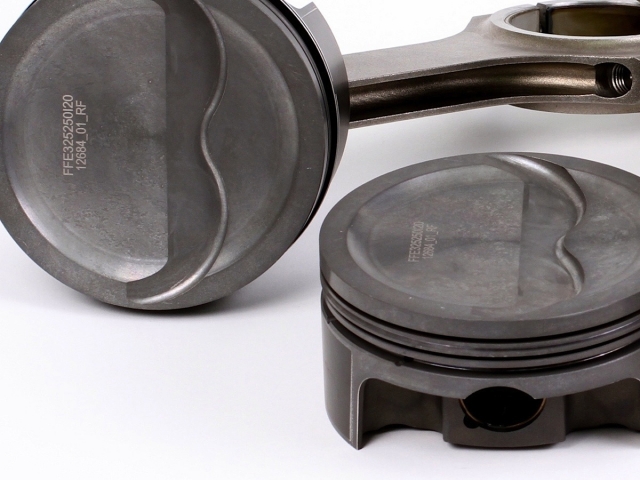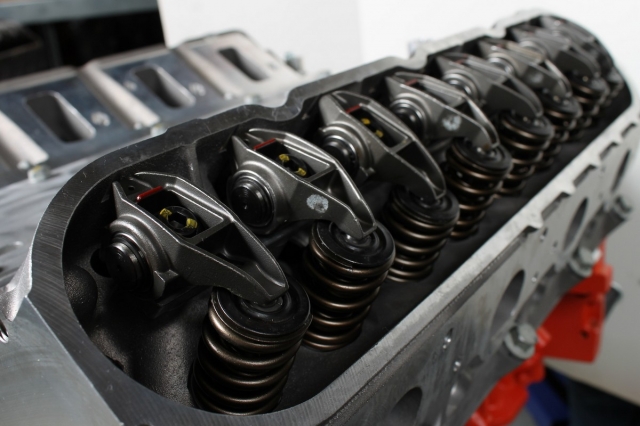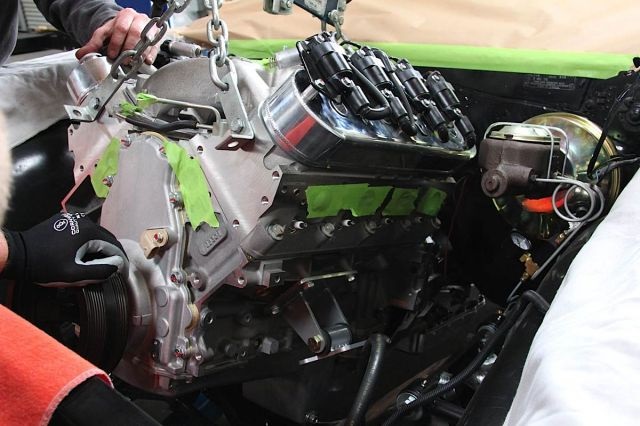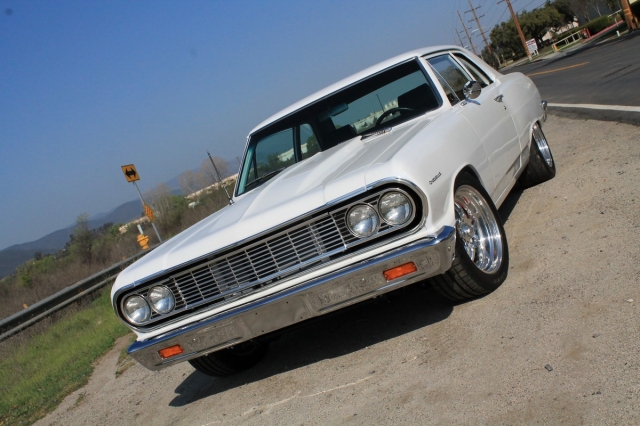When it comes to building anything substantial, having a blueprint is a vital part of the process. After all, you wouldn’t build a house without an exact plan, would you? Well, the same goes for building cars, and for our 1964 Chevelle we have the ultimate blueprint in mind – a 427 ci LS engine from BluePrint Engines.
And yes, that means that our killer A-body will be sliding corners, doing burnouts and taking part in some autocross action with a noticeable jump in power very soon. But before we can showcase our beloved Chevelle, it’s only fair that we show you how it got there.
Introductions
Since introducing our Project BluePrint Chevelle last year, we’ve set our GM A-body up with quite a few performance upgrades, including a Ridetech suspension system, Billet Specialties wheels, Continental tires and SSBC brakes. But all of this would be pointless without the perfect engine to tie everything together, so we contacted BluePrint Engines to see what they had in store for us and we went behind the scenes to see the making of one of the finest 427 ci LS engines on the market.
Started nearly 20 years ago in a garage in Nebraska, BluePrint Engines has become one of the biggest names in the industry for performance crate engines. From Chevy to Mopar, BluePrint focuses on providing big horsepower, a reliable product, and excellent customer service. But above all else, the company strives to give each and every customer exactly what they’re looking for in a built crate engine.
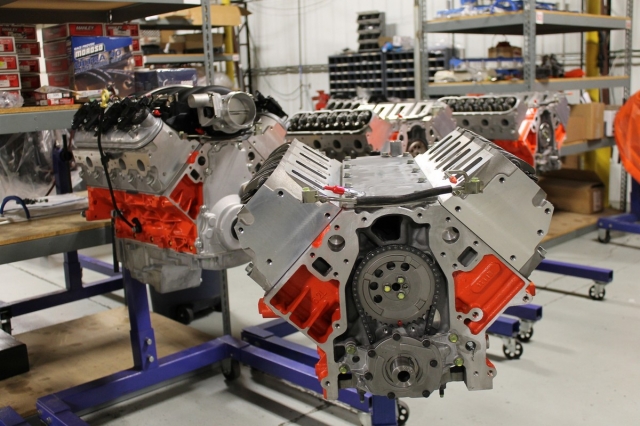
Every engine that BluePrint builds is checked and double checked by master technicians before being dyno tested and shipped from the manufacturing facility.
This means engines for all walks of life, whether they’re intended for a 4×4 or a custom frame-off restoration. This broad variety gives enthusiasts of all kinds plenty of options, including bumps in horsepower for modern musclecars, performance upgrades with BluePrints’ exclusive cylinder head and Chevy big-block castings, which they recently started selling, and even crate engines used by many big name engine builders.
BluePrint aims to have everything that a potential customer could want in stock at all times, but if a specific build is necessary, one can expect their custom engine to take about 20 business days to complete.
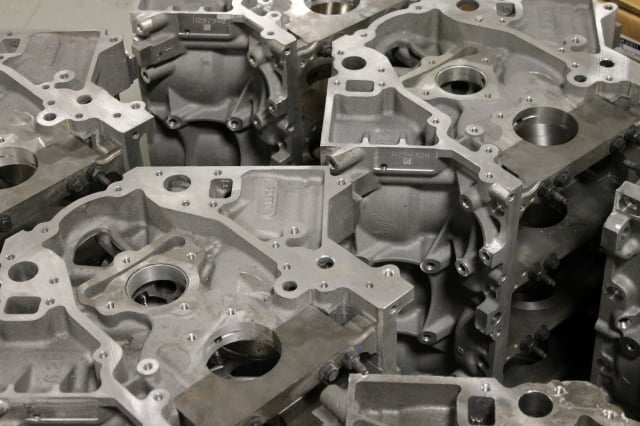
Whether your engine is in stock or BluePrint needs to build it once it’s ordered, you can expect that a good 20 business days worth of work went into making your engine exactly what you wanted.
With a reputation like this, it was a no-brainer for us to choose a BluePrint engine, and with a displacement shared by so many great Chevys, we couldn’t say no to the iconic 427 for our Project Chevelle.
For our ultimate pro-touring Chevelle, we wanted plenty of reliable horsepower, but not too much that it would be more of a hassle to drive and race the car on the autocross track, so we needed a good balance. The right balance between reliable muscle and ultimate performance.
So, with that in mind, we talked to BluePrint and ultimately decided on the GM LS Pro Series 427ci Engine (part #PSLS4270CTC) retro-fitted with a classic carburetor setup, one of three LS engine options offered. We may be going modern for our Chevelle, but some things like the fuel delivery just had to stay old school, for the time being.
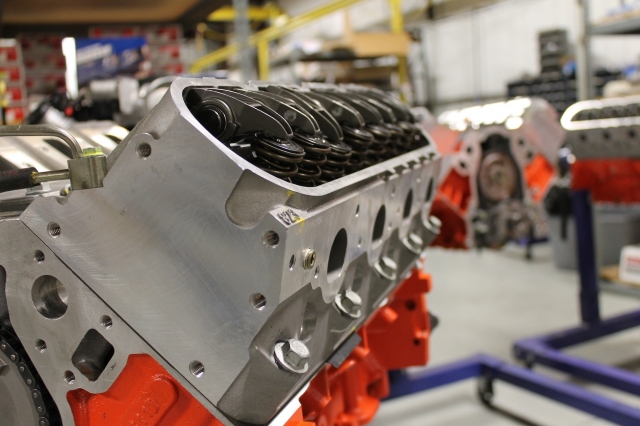 BluePrint Carbureted LSX Parts List
BluePrint Carbureted LSX Parts List
Block: New GM Ls3/L92 Aluminum Block (PN #PSLS4270CTC)
Crank: BluePrint or SCAT forged Steel 4.125-stroke
Rods: Forged I Beam 6.125-inch
Pistons: Forged Mahle 11.0:1 compression
Camshaft: Hydraulic Roller .624 intake .624 exhaust lift, 247 intake, 263 exhaust duration at .050, 114 degree lobe separation
Rockers: GM Factory with upgraded full roller truion
Harmonic Balancer: Non-weighted
Rotating Assembly: Balanced, Mahle performance rings, premium single true roller timing set
Heads: New GM L92/Ls3 Aluminum, chrome moly retainers and spring locators, 2.165 intake valves, 1.590 exhaust valves, hardened push rods
Carburetor: AED 850cfm with mechanical secondaries, dual accelerator pumps, mechanical choke
Intake: Edelbrock/ GM Performance Parts Single Plane Satin Aluminum
Sensors: Crank, Cam and MAP
Distributor: Coil packs and coil pack harness
Spark Plugs: AC Delco 41-985 and plug wires
Dressings: Valve covers, oil pan, and timing cover
Engine Block
With the BluePrint 427 ci LS engine, we got all kinds of performance goodies to boost up our classic Chevelle. It started out with a new GM LS3/L92 aluminum block – a new take on the classic LS base that many pro-touring, hot rod and performance musclecar guys have turned to over the last decade.
Originated as a classic Chevy powerplant found in the Corvette and later the Camaro, the LS block has become one of the most popular performance platforms in the industry today. Not only did we get reliability from our thoroughly worked-over engine, we also get years of progression, as the LS3/L92 aluminum block offers compact performance in a nice, tight, and light-weight package.
Rotating Assembly
Getting our engine in tip-top shape, BluePrint fitted our LS powerhouse with a forged steel crankshaft, forged I-beam rods, and Mahle pistons, contributing an 11.0:1 compression ratio. Our basic-dressed BluePrint engine also came with Mahle performance rings, a hydraulic roller camshaft, premium single true roller timing set, and GM factory roller rockers with upgraded full roller trunion.
The BluePrint Carbureted LSX is built using Mahle’s PowerPak Ring and Piston sets (Part # L92055070I08). Mahle’s PowerPak piston assemblies include forged pistons, piston rings, pins, and wire locks – all in one race-proven package. The pistons are hand-deburred and coated with dry phosphate to protect against ring micro-welding and pin galling during initial startup. For additional performance, Mahle added its proprietary Grafal anti-friction coating to the piston skirts. Low drag rings, steel pins, and round wire locks complete the Mahle PowerPak package.
The forged Mahle 11.0:1 pistons feature a 4.070-inch bore with a 1.055-inch compression distance and a piston head volume of +8.00cc. PowerPak pistons are made from either 4032 or 2618 aluminum alloy. We recently spoke with Trey McFarland, Sales Manager over at Mahle to get the inside scoop on these subtle difference and he shared, “In terms of overall strength the 2618 edges 4032 out by a small margin. Silicon content makes up the main effective difference with the 4032 alloy containing 12-13 percent silicon compared to 2618 alloy having 0.2 percent or less. Silicon reduces heat expansion and the decrease in expansion allows for tighter clearances, reduced wear on both the piston and bore.”
McFarland went on to say, “The hard silicon element greatly helps to increase the number of heat cycles the piston can endure before ring grooves and skirts start to distort. This makes the 4032 alloy well suited for a wide range of applications from street performance to upper level sportsman racing. The compromise is that the alloy softens at a much faster rate, allowing the piston to distort more rapidly. This makes the 2618 alloy best suited for extreme-duty race applications where the engine will be serviced on a regular schedule. Due to the increased wear resistance and longevity characteristics of the 4032 alloy, Mahle uses this alloy on a wider scale.”
With the pistons and rings handled it was time to balance everything back out. Giving the pistons and crankshaft the backing that they needed is a non-weighted harmonic balancer, which allows our engine to stay right on track without any extra mass for balancing purposes.
Fuel Delivery
Now you may be asking yourself why not fuel-injection? Well, the answer is simple; for now we just wanted to stick with some old-school-cool for our vintage Chevy.
So instead of deciding on one of the many fuel-injected engines that BluePrint has, two of which fit into the LS platform category, we opted for a new-generation retro-fit carburetion system. Allowing us to do this is an AED 850 cfm carburetor with mechanical secondaries, a mechanical choke and dual accelerator pumps.
This isn’t your grandpa’s carburetor, as the AED 850cfm unit is fully blueprinted and tested against the company’s “wet flow” specifications. This means quick and balanced fuel delivery on demand that is perfect for any vintage or even late-model project car headed for days on the street and strip.
Cylinder Heads
For the cylinder heads, the BluePrint 427 ci LS engine offers new Chevrolet Performance LS3/L92 aluminum heads. These next-gen components come with chromoly retainers and spring locators, as well as hardened push rods. With 2.165 intake valves and 1.590 exhaust valves, there’s no going wrong when it comes to the transfer of the air/fuel mixture and exhaust gasses, and the aluminum finish gives our engine plenty of style while maintaining a low-weight profile.
Adding to the excitement of the project, our engine also came with some fantastic “extras”, including a single plane aluminum intake, spark plugs, wires and a wiring harness, valve covers, retro-fit oil pan, and a timing cover. BluePrint set our LS engine up with a single-plane aluminum intake, giving our Chevelle gains in top-end horsepower with an adequate throttle response to boot.
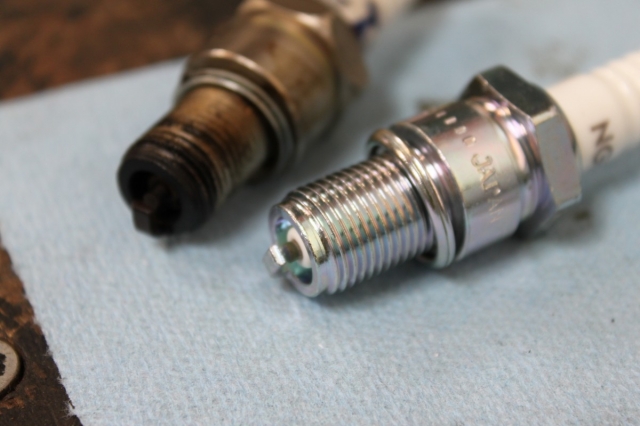
Removing the spark plugs was necessary to prime the engine, but it also gave us an opportunity to compare the plugs from our old big-block to the shiny new ones intended for the 427ci LS. No matter if you’re doing an engine swap, an overhaul, or just some performance upgrades on your own project car – it’s always a great idea to check the spark plugs, which could be affecting the overall power and performance of your ride.
Giving our engine the spark it needs are AC Delco 41-985 spark plugs, backed by high-performance wires and a wiring harness created specifically for the LS3/L92 application. And to finish everything off in proper style, the 427 even comes complete with crank, cam and MAP sensors to keep everything rolling smoothly.
Added Bonuses
While our BluePrint engine came to us in basic dress, we had to add some things in order to make it perform properly in the Chevelle. We’ve already covered many of those components much more depth in Part 1 showcasing the engine swap. Some extras we used to complete our engine build included; a Billet Specialties front drive, Hedman headers, Flowmaster exhaust, Holley fuel system, Earl’s hose and fitting, and an MSD Performance ignition to complete our engine setup and give our Chevelle plenty of firing power.
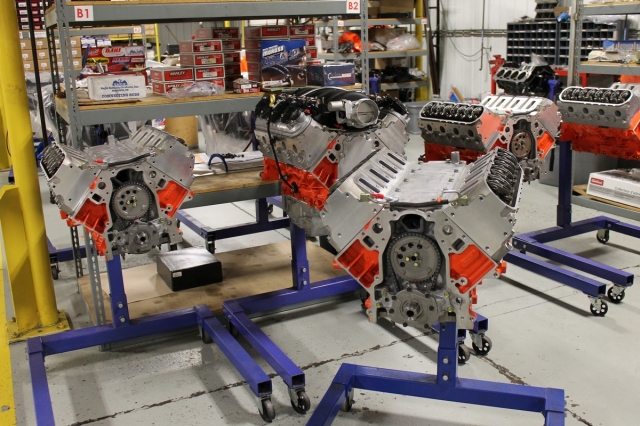
From big blocks to LS engines, BluePrint Engines has all sorts of options for your Chevy-powered project car, whether you’re building a street rod or a pro-touring beast like ours.
Tried and Proven
Every engine that BluePrint builds is dyno-tested before it leaves the shop and with our choice of the 427 ci LS, we secured ourselves an engine with a proven 632.3 hp to the crank at 6,000 rpm and 565.2 lb-ft of torque at 5,500 rpm.
“I guess the biggest question people have for us revolves around our dyno testing process,” BluePrint Product Manager Dru Freese told us. “Yes, we do actually dyno test every single engine that leaves our facility. People love seeing how much power their specific engine makes, but in all honesty, we really see it as our last quality check before it leaves us and heads to the customer. By dyno testing, we are able to eliminate any issues that might come at start up that most people who purchase a crate engine don’t want to deal with.”
Yes, we do actually dyno test every single engine that leaves our facility. People love seeing how much power their specific engine makes. -Dru Freese
So how does our 427 ci LS engine compare to other, more popular crate engines that BluePrint offers? Well, for that information we also turned to Freese.
“Our most common crate engines would be our Small-Block Chevy line,” Freese told us. “The LS options are picking up, but small-block still would be the bulk of the engines going out the door. There’s just something about a 383 that people gravitate to.”
While a 383 ci engine is a stellar choice for a variety of project cars, our 427 ci LS offers us everything we wanted for our Chevelle and more, and Freese explained what it is about this engine that makes it so great for builds like ours.
“This particular part number is great for someone that wants the newer LS technology but would still like to run a carburetor,” she explained. “Some people have more experience in that area and don’t want the more modern fuel injection setup. It really is the perfect mixture of old-school and new-school technology.”
Tying It All Together
Before we could put our new engine in the BluePrint Chevelle, we had to completely rid the car of its old 468 ci big-block. To do this, we placed the car in the more than capable hands of our Power Automedia shop manager, Sean Goude, who, elbow deep in grease, pulled the old digs from its previous container.
With everything out of the way, the BluePrint LS was ready to be put in place. Because every BluePrint crate engine comes with all the components needed to install it, we ran into little trouble securing our engine into the Chevelle’s engine bay.
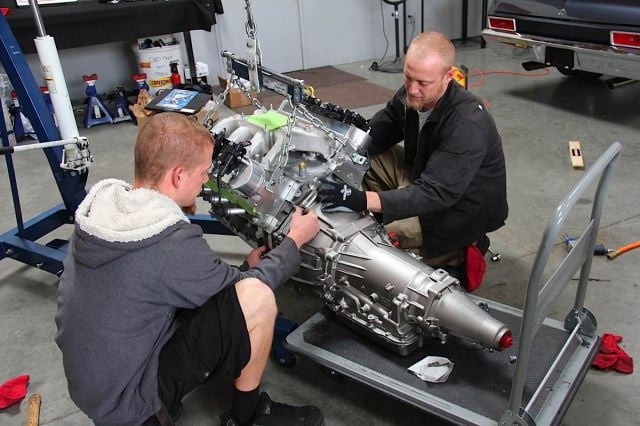
To avoid the hassle of working in tight spaces and secure the Gearstar transmission to our new BluePrint engine, Power Automedia Shop Manager Sean Goude (right) and tech Tim Obetz bolted the two powertrain components together prior to the install.
Before inserting the engine, we tied the BluePrint engine to our Gearstar 4L65e transmission. Because our Gearstar is a bit bigger than what the Chevelle initially ran, we had to do some modifications to the transmission tunnel, but this had nothing to do with the actual fitment of the engine. We did, however, have to make a few adjustments to our engine mounts due to the pan that our BluePrint engine came with and the operating angle of the engine for proper fuel flow. Other than that, strapping our 427 ci engine to the Chevelle was smooth sailing.
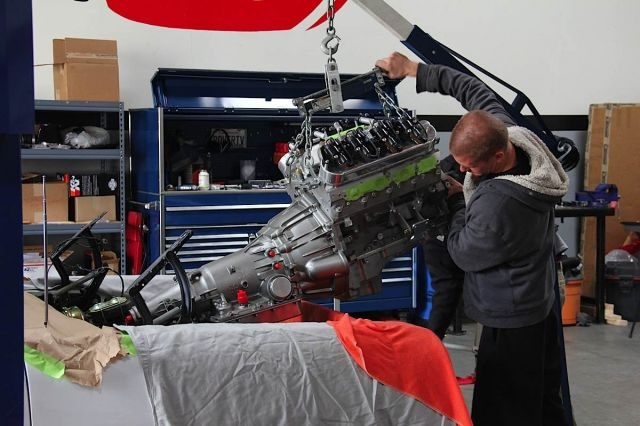 Every BluePrint engine comes with an installation guide, which we followed to make our LS install as smooth as possible.
Every BluePrint engine comes with an installation guide, which we followed to make our LS install as smooth as possible.
“Between the installation guide and the recommended add-ons we publish on our website, we try to cover every imaginable base possible,” Freese said about recommendations BluePrint gives for the installation of their engines.
After checking the engine for any damage caused during shipping, and to ensure that all our crate engine parts were included, we buttoned up our BluePrint LS with are added components mentioned in the Swap Story Update and got down to business.
Once the engine was in place, we strapped some finishing touches up under the hood, like our radiator fan, air cleaner and of course, our Optima battery. We then proceeded to lubricate our engine with only the best, utilizing conventional oil for the first go-around, as well as 50/50 antifreeze, and premium fuel. Conventional motor oil was used at first because BluePrint recommends not using synthetic oil during the break in process.
“We recommend no synthetic oil in the first 6,000 miles because we want to make sure that everything is broken in properly,” Freese clarified. “Synthetic oil by nature is pretty slick and we want to assure that everything is broken in properly. Just a little extra insurance to make sure the engine lasts a very long time for our customers.”
BluePrint notes in their installation manual that all their engines are pre-lubed and dyno tested before they’re shipped, but additional preventative maintenance, such as pre-lubing the oil filter, is necessary before the engine’s first turn-over in your project vehicle.
Once we verified that our engine was lubed and the ignition source didn’t have power, we proceeded to prime the engine by taking out the spark plugs and cranking the engine until oil pressure was visible on our manual gauge. Fuel should not be supplied to the engine at this point, and failure to follow priming instructions could lead to premature bearing damage. Once the engine was primed, we put the spark plugs back in and were ready for what we’ve all been waiting for.
Letting Her Roll
No matter how much fun swapping an engine on a classic musclecar can be, one of the most exciting and rewarding parts of a build is the first fire. Now, because our BluePrint engine came with the distributor already in place, we didn’t have to worry about initial timing, as it was already set for us at the factory. With our timing verified and plenty of fuel to fill our fancy, we cranked over our 427 ci LS for the first time and let her purr.
With our engine’s roller camshaft, we didn’t have to worry about doing a camshaft break-in either, and were able to move on to checking oil pressure and coolant temperature, as well as for any potential leaks or noises. Once everything checked out, it was on to timing our engine using our Innova Professional Digital Timing Light.
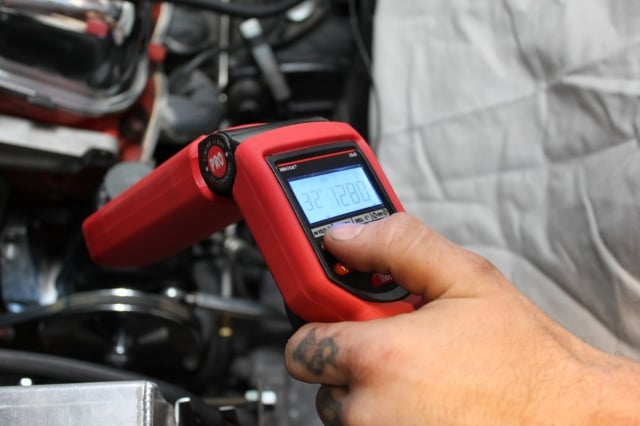
With a couple minor adjustments, we had our BluePrint engine’s initial and total timing set according to BluePrint’s recommendations and were ready to unleash our powerful beast on the road.
With a few minor adjustments we set our initial timing to between 12 and 13 degrees, well within BluePrint’s recommended 10 to 16 degree range, and the total timing to 32 degrees. BluePrint recommends that total timing fall between 32 and 34 degrees. Once that was complete, we took the engine up to 3,500 rpm (the same rpm we used to time the engine) to verify both the initial and total timing were correct before attaching the vacuum line and adjusting the idle.
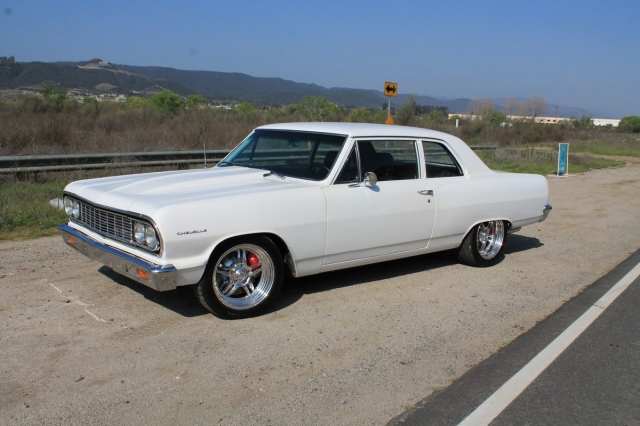
We love our Project BluePrint Chevelle and there’s nothing better than getting to enjoy some Southern California driving during the initial 500-mile engine break-in process.
Natural Break-In
For the initial break-in process, BluePrint recommends running the engine for 500 miles under moderate acceleration. Hard accelerations for sustained periods of time during the first 500 miles should be avoided, and could cause damage to your engine if the recommendation is not followed.
To complete our break-in, we hopped in our car and cruised her around, making sure to vary our engine speeds to help seat the piston rings.
The whole point of an engine break-in is to provide that little extra push to assure every component in your engine seals properly, especially the piston rings against the engine’s cylinder walls. It also removes the opportunity for leaks.
We started our break-in process with a low-power start, allowing the engine to warm up properly at a lower rpm. After running the car for about a half hour, we then took to the streets and ran the car at varying speeds between about 30 mph and 55 mph.
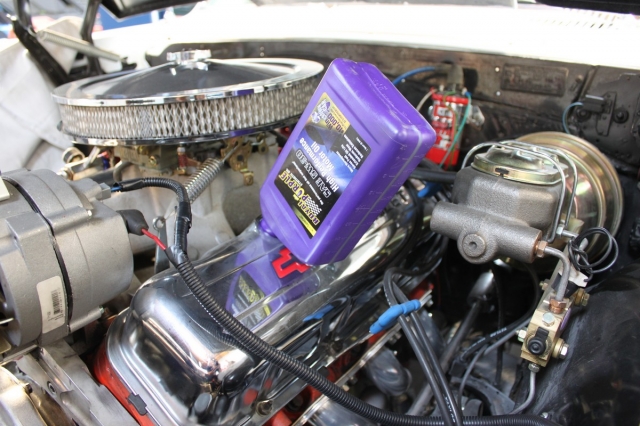
We used Royal Purple SAE 5W-30 oil and Royal Purple transmission fluid in our Gearstar 4L65e transmission for this build.
With a number of hours of mild cruising under our belts, we proceeded to increase our speed variances, still keeping our foot out of it (for the most part), just to make sure the engine was good and ready for what we had planned for her. Along the way, we always kept an eye on oil pressure and fluid levels. Keeping an eye out for leaks, which we didn’t have, was also on our agenda.
Down to the Dyno
After we got our BluePrint engine settled in and past its break-in point, we wanted to see just how much power we had gained doing the swap. So we strapped the Project BluePrint Chevelle up to our Dynojet dynamometer and let her rip.
Working off of BluePrint’s dyno numbers of a maximum of 632.3 bhp and 565.2 lb-ft of torque for our specific engine, we expected to see power numbers in the high 400’s with torque falling in the lower 400 area, and we were very happy with the results.
Starting our engine pulls at 3,500 rpm, we played into the engine’s mild power numbers down low and gradually increased our engine revolutions all the way up to 6,400 rpm.
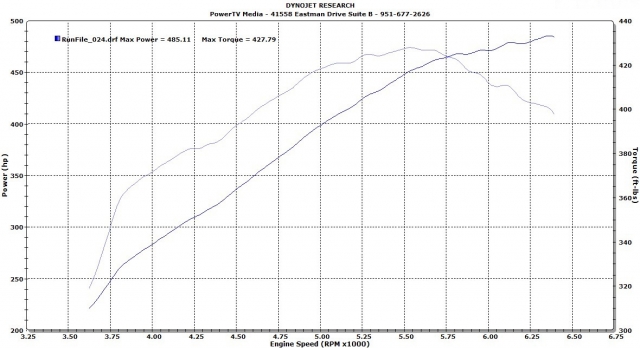 Between those two points, our BluePrint engine proved to gain massive amounts of power and throw down impressive amounts of torque.
Between those two points, our BluePrint engine proved to gain massive amounts of power and throw down impressive amounts of torque.
When all our dyno fun was done, our vintage GM A-body had thrown down 485.1 hp to the rear wheels at 6,400 rpm. For torque, the BluePrint engine gifted our Chevelle with 427.8 lb-ft of torque at 5,500 rpm. That’s a considerable increase from our Chevelle’s previous 385 hp big-block.
Not your average garage-build, our BluePrint engine proved to give our vintage Chevelle a new leash on life, prepping it with a fully streetable 100-horsepower increase with plenty of torque to back it up at stop lights, drag strips and autocross competitions.
The Road Ahead
The completion of our Project BluePrint Chevelle has been a long time coming, but with the 427 ci LS engine installed and humming perfectly, we have to say that it was well worth the wait. That doesn’t mean, however, that we’re done with our ‘64 Chevelle just yet. Stay tuned for the final feature, coming right up!



